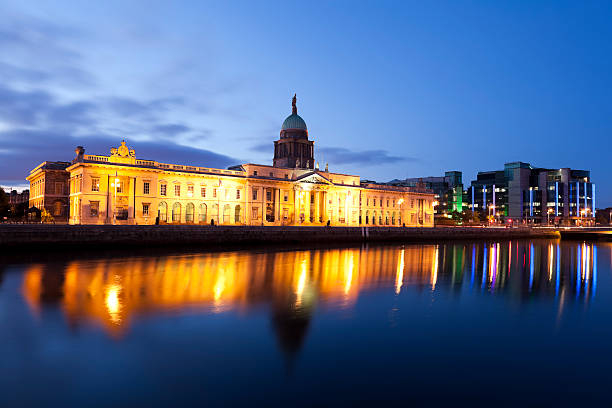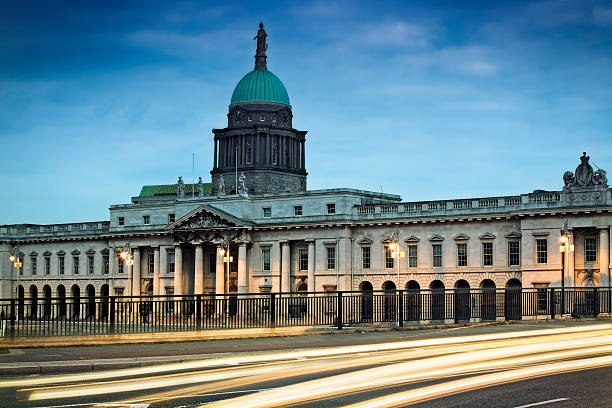The Custom House

The Custom House (Irish: Teach a Chustaim) is a neoclassical 18th-century structure in Dublin, Ireland, that houses the Department of Housing, Local Government, and Heritage. It is situated on Custom House Quay on the north side of the River Liffey, between Butt Bridge and Talbot Memorial Bridge. Engineer Thomas Burgh erected the previous Custom House in 1707. (1670–1730). By the late 18th century, however, it was declared inadequate for purpose. The concept for a new Custom House in Dublin came from John Beresford, who became Ireland's first commissioner of revenue in 1780.
The building's original role for collecting customs charges became outdated as the port of Dublin relocated farther downriver, and it was converted into the headquarters of the Local Government Board for Ireland. The Irish Republican Army burned down the Custom House during the Irish War of Independence in 1921 in order to undermine British administration in Ireland by destroying tax documents. The Irish Free State government restored it following the Anglo-Irish Treaty. The dome was restored with Irish Ardbraccan limestone, which is substantially darker than the Portland stone used in the original construction, and the consequences of this repair can still be seen on the building's façade today. This was done to highlight Irish resources.
An Office of Public Works (OPW) staff restored and cleaned the masonry again in the 1980s. The OPW, Department of Housing, Local Government and Heritage, and Fáilte Ireland collaborated to create a tourist experience at the Custom House in November 2021, highlighting the structure's construction, fire, and restoration.
Location: North Dock, Dublin 1, Ireland













